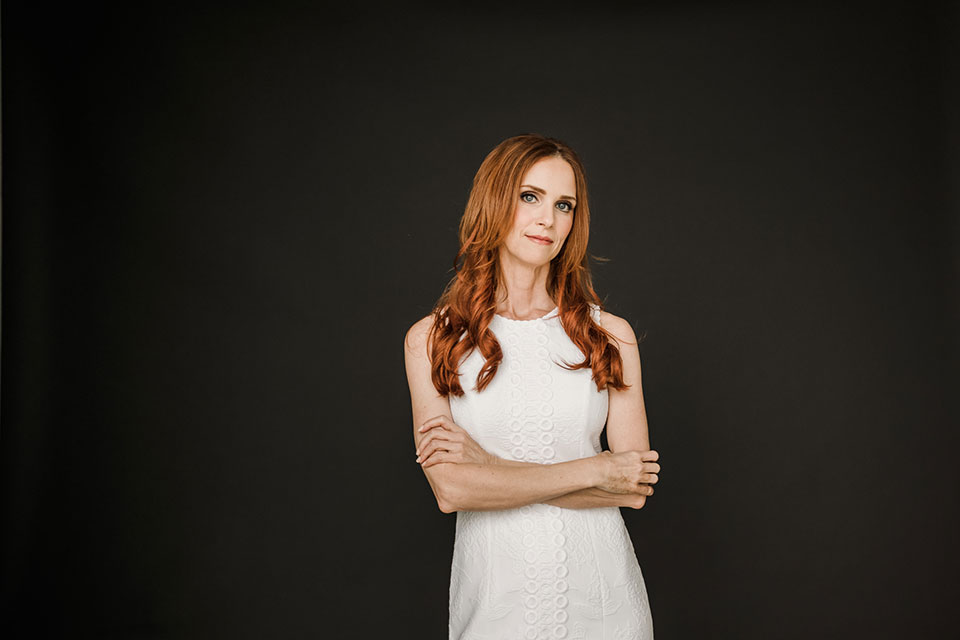Have you ever considered picking clothes based on what colors you need?

Most people pick clothing based on which color goes best with their skin tone, or which color best expresses how they feel.
But as a busy executive, have you ever considered picking clothes based on what colors you need?
Is this concept totally foreign to you? Let’s delve into it!
I’m an emotional freedom mentor, intuitive healer, and author of the best-selling new book “Feel Better in Five Minutes — An Empowering Guide to Gain Control Over Your Emotions.” When you’re in my line of work, you know wearing color isn’t only for bringing out your best features or complementing your hair. Color is an extraordinarily powerful tool that holds the energetic vibrations of emotions. Knowing that, it makes sense that we should use it to our advantage whenever possible — especially when we’re deciding what clothes to wear for work — in order to make the impression we want to make and feel the way we want to feel.
Did you know wearing the right color can help you:
- Boost your confidence before a big meeting?
- Get an energy pep if you’re feeling sluggish?
- Make decisions if you’re feeling indecisive?
- Relax and unwind after a long work week?
It’s true! But there’s a special formula for knowing which colors can accomplish which tasks… because while some colors may help you accomplish a task, a totally different color may be counterproductive!
This may seem strange or otherworldly at first, but you likely do it and are influenced by it on a semi-unconscious basis already. A red tie is commonly known to project strength. But do you feel the same strength being projected by a lavender tie? Sticking with red, do you find yourself wearing red to visit a family member recovering in the hospital? Or would you be more apt to wear more calming, soothing colors for those occasions? Come to think of it, do hospitals paint their walls bright red, or more calming, soothing colors? Have you ever thought of why?
How Colors Relate to Emotions
The human energy system is a fabulous array of color. Everyone has seven main chakras, or energy centers, with the colors red, orange, yellow, green, blue, indigo, and violet, each representative of vibrational and emotional energy. Orange, for example, usually represents sexuality, creativity and self-expression, while green is usually indicative of love, harmony, gratitude, and compassion.
Some people’s chakras can be very strong and vibrant (a very bright orange chakra potentially represents a very sensual, sexual, and creative individual), while other people’s chakras can be very dull (an aura devoid of green suggests a person who may have difficulty being loving or compassionate with themselves and others).
The more you work with a specific color, whether it be a walking through and looking at a beautiful green forest, eating a bright red apple, or wearing a comfy blue sweater, the more you bring that color into and strengthen that portion of your energy system.
Each color, therefore, has a use — kind of like a vitamin that is providing a specific nutrient.
Let’s again take the example of red. If you’re feeling insecure, this means that you have a deficiency of red in your energy system and need to add it in. This will help you release the feeling of insecurity and replenish your deficiency! Absolutely wear that bold red tie or that red work dress and watch how your confidence shifts!
I also previously mentioned that some colors may be counterproductive for a task you want to accomplish. Let’s say you’ve been very angry with a fellow coworker, have a meeting with them today, and want to make peace. Red is NOT the color to wear. Adding more red will only amplify your anger, and likely theirs as well!
In order to accomplish a certain task or heal a certain deficiency with color, I encourage you to get my book and look at the color chart I provide on page 62. You’ll see a table of colors, when to use them, and when NOT to use them. If your goal is to let go of your anger and make peace with your coworker, the table shows red, orange, yellow and violet in the “Don’t Use” columns. Instead, try wearing green or blue. We already know green represents the emotions of love, harmony, gratitude, and compassion. Blue is associated with self-expression and communication, and can help calm the mind. Much better colors to wear than the fiery red!
Color Wearing Tips
1) If you have a big meeting and feel like you’re lacking confidence, try wearing something red or orange to bring on the power to boost you.
2) It’s already been a long week of work, and it’s only Wednesday. You need an energy boost. Put down that Red Bull energy drink, and wear something yellow, orange, or red instead! Think Santa — the CEO of Christmas, Inc. is decked out in red while he’s up all night Christmas Eve! Definitely stay away from green or violet, though.
3) Having trouble being decisive? You want to be wearing blue, orange, or yellow. That’ll help you clear the cobwebs and make more definitive decisions. Stay away from indigo or violet, though. That’s too much head space! We want clear-mindedness and to be in tune with our confidence when making gut calls.
3) If you are relaxing after a long week, cuddle up in some soft off-white, pink, or gray loungewear for the morning. Stay away from red or orange, though.
4) If you’re not sure which colors to wear, just open up your closet and see what clothes you are attracted to that day. Let your intuition guide you.
5) If you feel you need to wear a color that does not look good on you, you can put it on under your clothes, slip it in your pocket, or wear it in accessories. This way you still get the benefit without feeling like you are washed out or overpowered by it. Think painting your nails yellow to cheer yourself up while you’ve got your dress shoes on.
Written by Amanda Hainline.
Bring the best of the CEOWORLD magazine's global journalism to audiences in the United States and around the world. - Add CEOWORLD magazine to your Google News feed.
Follow CEOWORLD magazine headlines on: Google News, LinkedIn, Twitter, and Facebook.
Copyright 2025 The CEOWORLD magazine. All rights reserved. This material (and any extract from it) must not be copied, redistributed or placed on any website, without CEOWORLD magazine' prior written consent. For media queries, please contact: info@ceoworld.biz











